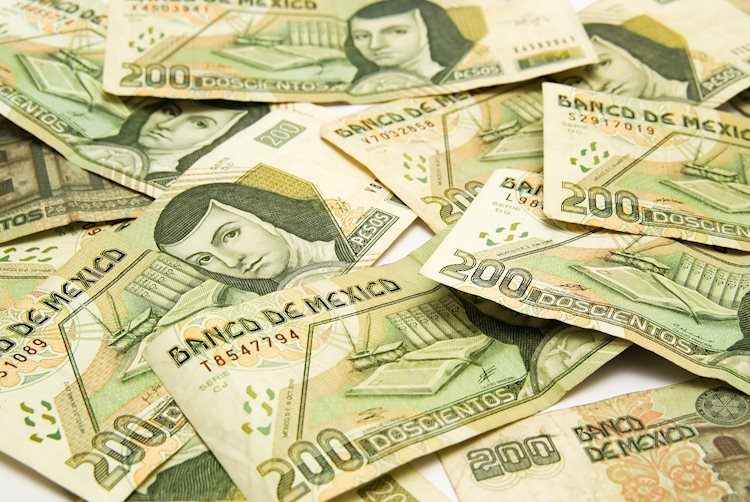The USD/MXN pair continues to decline, trading around 18.60 during Friday’s early Asian session. This downside movement is supported by expectations of a rate cut by the US Federal Reserve (Fed) in September. The positive data released on Thursday, including Initial Jobless Claims and Retail Sales, helped ease fears of a potential recession in the United States. However, investors are still counting on a Fed rate cut in September, which is weighing on the Greenback. The market is currently pricing in a 25 bps rate cut in September and a 20% chance of a 50 bps cut.
Despite a surprise rate cut by Mexico’s central bank (Banxico) last week, lowering interest rates by 25 bps to 10.75%, the Mexican Peso remains strong. This strength is attributed to the positive performance of US markets, which is allowing the Peso to recover. Mexican economist Alexis Milo mentioned that the effect of the US market performance is outweighing the expected depreciation from the rate cut. Investors will be keeping an eye on the preliminary US Michigan Consumer Sentiment Index for August, Building Permits, and Housing Starts, along with a speech by the Fed’s Austan Goolsbee scheduled for Friday.
Banxico, the central bank of Mexico, plays a crucial role in preserving the value of the Mexican Peso and setting monetary policy in the country. Its main objective is to maintain low and stable inflation within target levels, aiming for a 3% inflation rate. The primary tool used by Banxico to guide monetary policy is by setting interest rates. When inflation exceeds the target, the bank will raise rates to control it, making borrowing more expensive and cooling the economy. Higher interest rates are generally positive for the Mexican Peso, attracting investors with higher yields.
Banxico convenes eight times a year to make decisions on monetary policy, with its decisions often influenced by those of the US Federal Reserve (Fed). The central bank typically meets a week after the Fed, reacting to and sometimes anticipating policy measures set by the Federal Reserve. For example, during the Covid-19 pandemic, Banxico raised rates before the Fed did to prevent a significant depreciation of the Mexican Peso and potential capital outflows. The rate differential between Banxico and the Fed plays a crucial role in shaping the exchange rate between the USD and MXN.
The market sentiment towards the Mexican Peso is currently positive despite Banxico’s recent rate cut. The strength of the Peso is sustained by the optimistic performance of US markets, allowing the currency to recover. Investors are closely monitoring economic indicators and central bank decisions to gauge the future direction of the USD/MXN pair. The expectation of a Fed rate cut in September continues to impact the Greenback, contributing to the downward movement of the pair. As global economic conditions evolve, market participants will pay close attention to developments that could influence the strength of the Mexican Peso and the USD/MXN exchange rate.





















